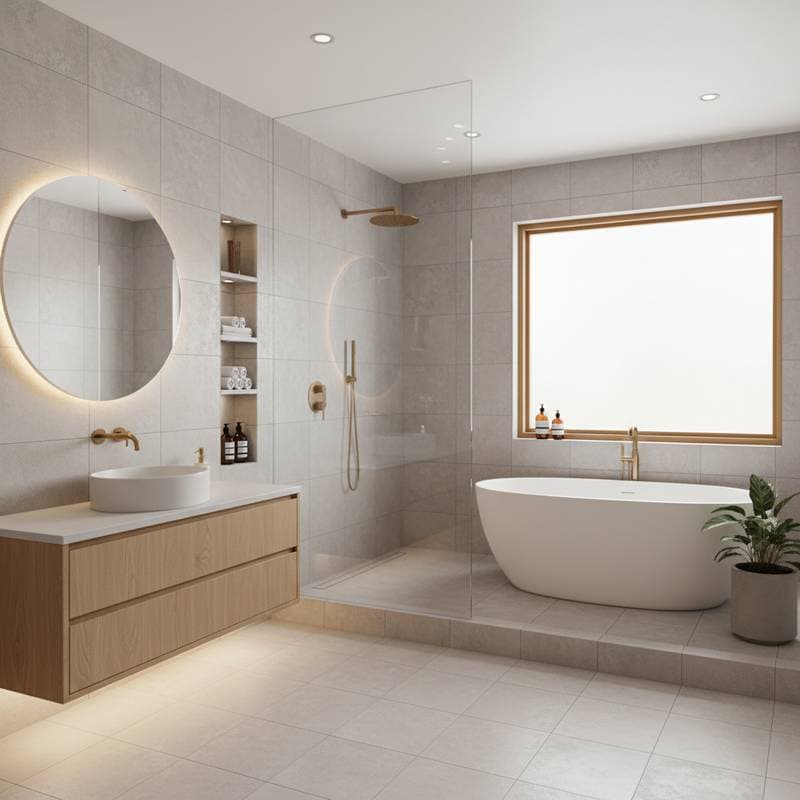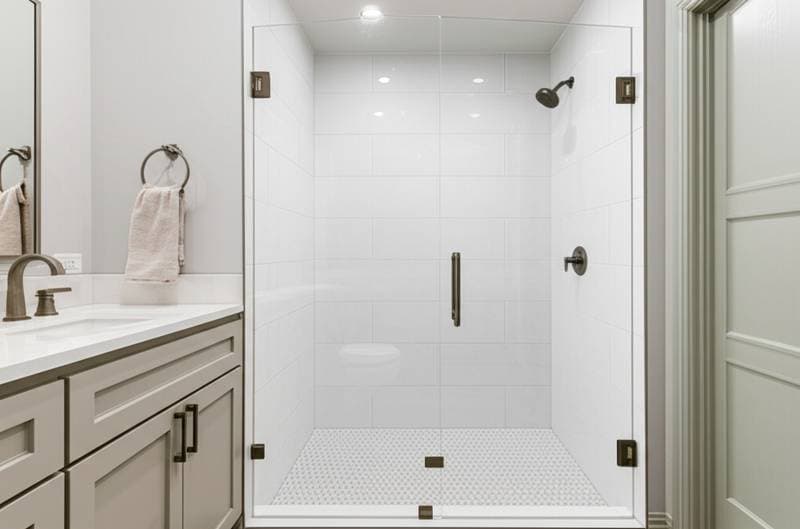The Rise of Wet Rooms in 2025: A 15 Percent Value Boost for Homes
Homeowners seek renovations that combine luxury, functionality, and financial return. Wet rooms emerge as a leading trend in 2025, offering seamless, spa-like bathrooms without traditional barriers. These designs not only enhance daily living but also appeal to buyers, potentially increasing property value by up to 15 percent according to recent market analyses. Factors such as aging-in-place features and water-efficient systems drive this appeal in a market favoring sustainable, accessible upgrades.
A complete wet room transformation typically ranges from 12,000 to 25,000 dollars, influenced by room size, material quality, and location specifics. This investment pays dividends through improved resale potential and reduced long-term maintenance. Below, examine the key elements that shape both cost and success.
Breaking Down Wet Room Costs
Wet rooms appear minimalist, yet their engineering demands precision to prevent water intrusion. Budget allocation focuses on robust water management, ensuring the space remains dry and durable. Understanding these components helps homeowners plan effectively and avoid surprises.
-
Waterproofing Systems: Allocate 1,500 to 3,000 dollars for specialized membranes, tanking solutions, and sealants. These layers form the foundation, protecting subfloors and walls from moisture penetration. Certified materials ensure compliance and longevity.
-
Drainage and Flooring Slope: Budget 800 to 2,000 dollars for linear drains or custom-sloped floors. Proper angling directs water toward drains efficiently, eliminating standing pools that breed mold. Engineers often recommend point drains for compact spaces or channel drains for wider areas.
-
Tiles and Surface Finishes: Porcelain tiles begin at 3 to 6 dollars per square foot, while natural stone or oversized formats escalate to 9 to 18 dollars per square foot. Select non-porous options with high slip resistance for safety. Anti-microbial coatings add protection against bacteria in high-moisture zones.
-
Glass Enclosures and Screens: A fixed frameless panel installs for 600 to 1,200 dollars. Opt for tempered glass with etched privacy patterns if desired. Hinged doors add 500 dollars more but improve accessibility for users with mobility needs.
-
Labor, Demolition, and Preparation: This category consumes 40 to 60 percent of the total budget. Tasks include removing old fixtures, rerouting plumbing, and leveling surfaces. Experienced crews complete these in 5 to 10 days, depending on complexity.
-
Permits, Inspections, and Fees: Set aside 300 to 500 dollars for regulatory approvals. Local codes vary, particularly in seismic zones where additional structural reviews apply.
-
Contingency Fund: Reserve 10 to 15 percent for unforeseen issues like subfloor rot or outdated wiring. Early inspections mitigate these risks.
Upper-floor installations raise costs by 20 percent due to access challenges and load-bearing assessments. Ground-level concrete setups simplify drainage but may require slab modifications for optimal flow.
Deciding Between DIY and Professional Installation
Wet rooms demand specialized knowledge to achieve waterproof integrity. While some elements suit hands-on homeowners, core construction requires experts to safeguard against costly failures.
Tasks Suitable for DIY
Homeowners with basic skills can handle preliminary work to save on labor.
- Dismantle existing fixtures, vanities, and wall tiles carefully to avoid damaging adjacent areas.
- Apply paint or wallpaper to dry walls once waterproofing concludes.
- Mount shelves, mirrors, or lighting fixtures after professionals complete structural phases.
These steps reduce overall expenses by 10 to 20 percent when executed properly.
Essential Professional Services
Certain aspects involve codes, tools, and techniques beyond amateur reach.
-
Applying Waterproof Membranes: Professionals use certified liquid-applied or sheet systems, layering them meticulously for seamless coverage. Incorrect application invites leaks that erode substructures over time.
-
Configuring Drains and Slopes: Experts calculate precise gradients, often 1 to 2 percent, to channel water effectively. Faulty setups cause backups or uneven drying.
-
Integrating Electrical and Heating Elements: Electricians ensure underfloor heating mats comply with wet-zone standards, positioning outlets and lights safely away from water paths.
Consider hiring professionals if assessments reveal soft subfloors, absent backup drains, prior water stains, or necessary plumbing relocations. Such indicators signal potential complications that amplify risks and expenses.
Long-Term Care and Warranty Essentials
Durability defines a successful wet room, supported by consistent upkeep and quality assurances.
Routine Weekly Maintenance
- Clean glass surfaces with a soft cloth and mild solution to prevent limescale accumulation.
- Remove debris from drain traps to maintain unobstructed flow.
Monthly Inspections
- Examine grout joints and sealant edges for gaps or wear.
- Test drainage by running water and observing complete evacuation.
Periodic Professional Reviews
Every three to five years, reapply grout sealers or refresh stone treatments per manufacturer guidelines. Ventilation fans should operate continuously during showers to control humidity levels below 60 percent.
Avoid abrasive cleaners that compromise sealant bonds. Promptly replace deteriorated caulk to block moisture entry. Certified installations often include 10-year warranties on waterproofing, with labor guarantees spanning 2 to 5 years. Document all processes with photographs and invoices to validate claims.
Prioritizing Safety and Regulatory Adherence
Safety underpins every wet room project, protecting occupants and preserving home integrity.
Begin by isolating water supply and electrical circuits. Equip workers with gloves, goggles, and slip-resistant footwear during material handling. Non-slip flooring tiles with a coefficient of friction above 0.6 minimize fall hazards.
Consult local ordinances for wet-area specifications, including drain placements and vapor barriers. Permits prove essential for drain alterations or heating additions, ensuring inspector approval. Timber-framed homes require joist evaluations to support added weight from tiles and substrates, potentially necessitating reinforcements.
Neglecting these protocols risks insurance denials for flood-related damages. Engage certified contractors who prioritize code compliance from inception.
Steps to Launch Your Wet Room Project
Initiate the process with targeted preparation for optimal outcomes.
Solicit bids from at least three licensed remodelers specializing in wet rooms. Request portfolios of completed installations, specifications on waterproofing products like Schluter or Laticrete systems, and explicit warranty details covering workmanship and components.
Account for supply chain delays, which extend 4 to 8 weeks for custom glass or imported tiles. Align timelines with household routines to minimize disruption. Prioritize a superior waterproofing foundation as the cornerstone of reliability.
Ultimately, a thoughtfully planned wet room delivers enduring safety, aesthetic appeal, and substantial equity growth. Invest wisely in expertise and materials to realize these benefits fully.












